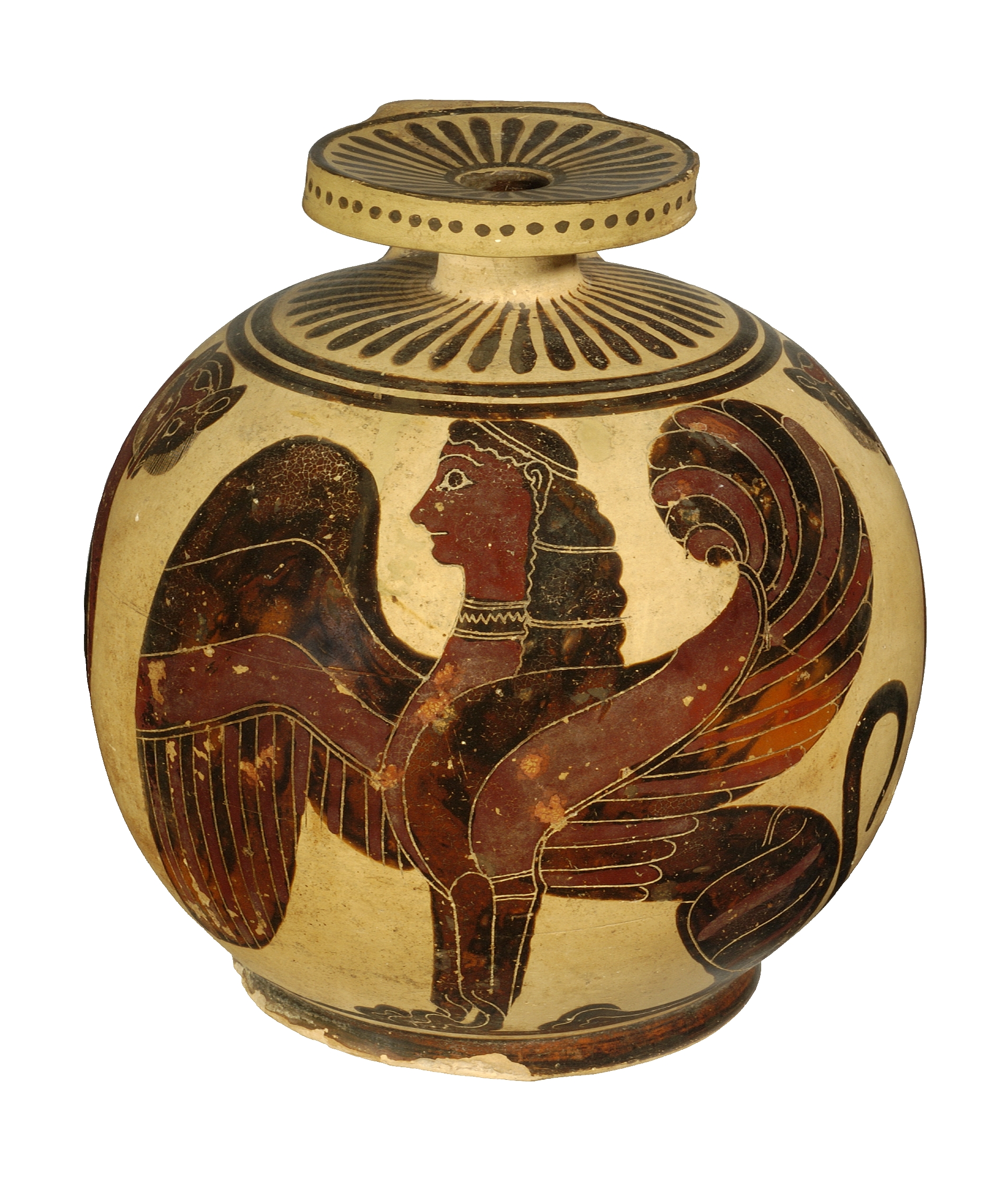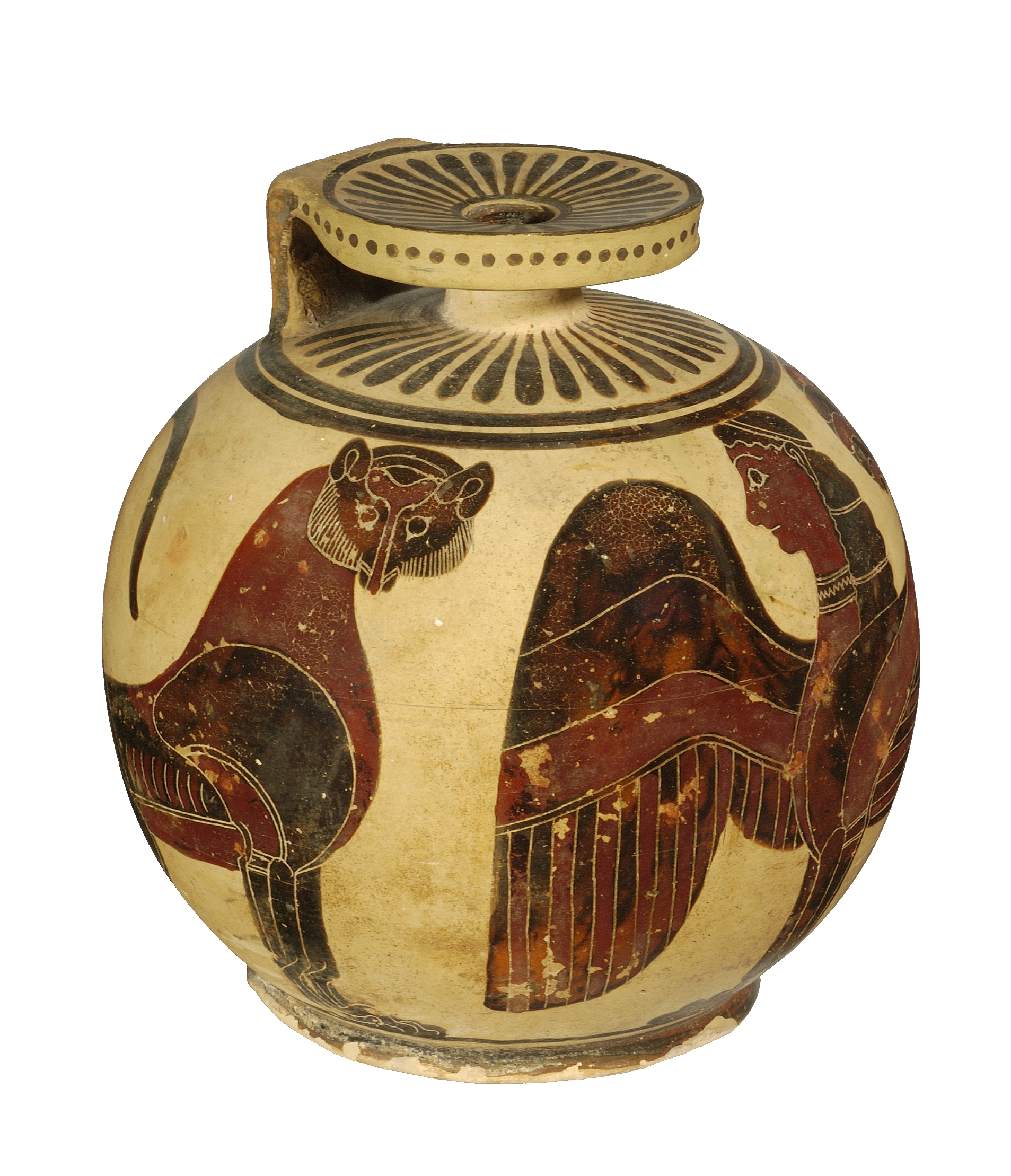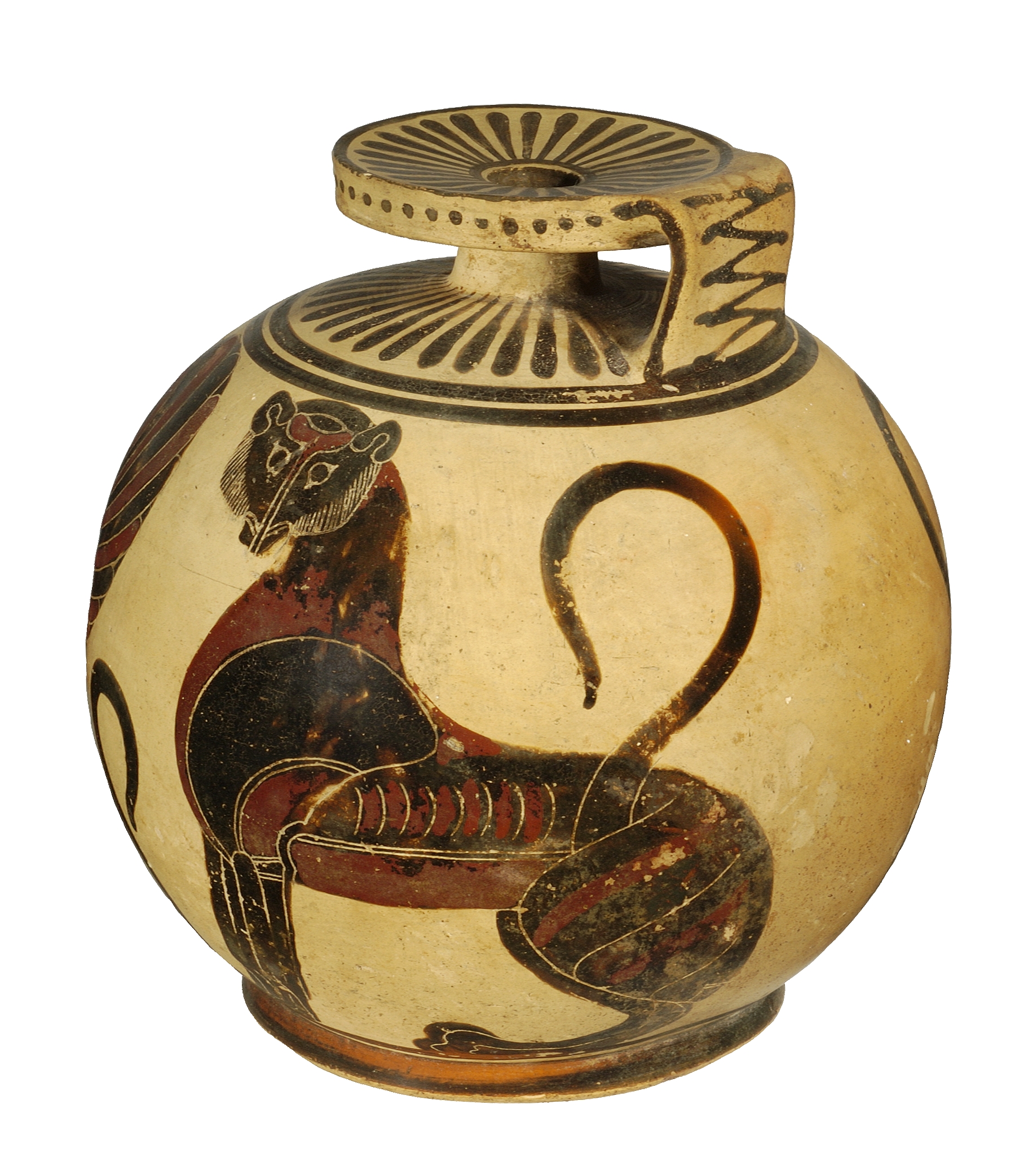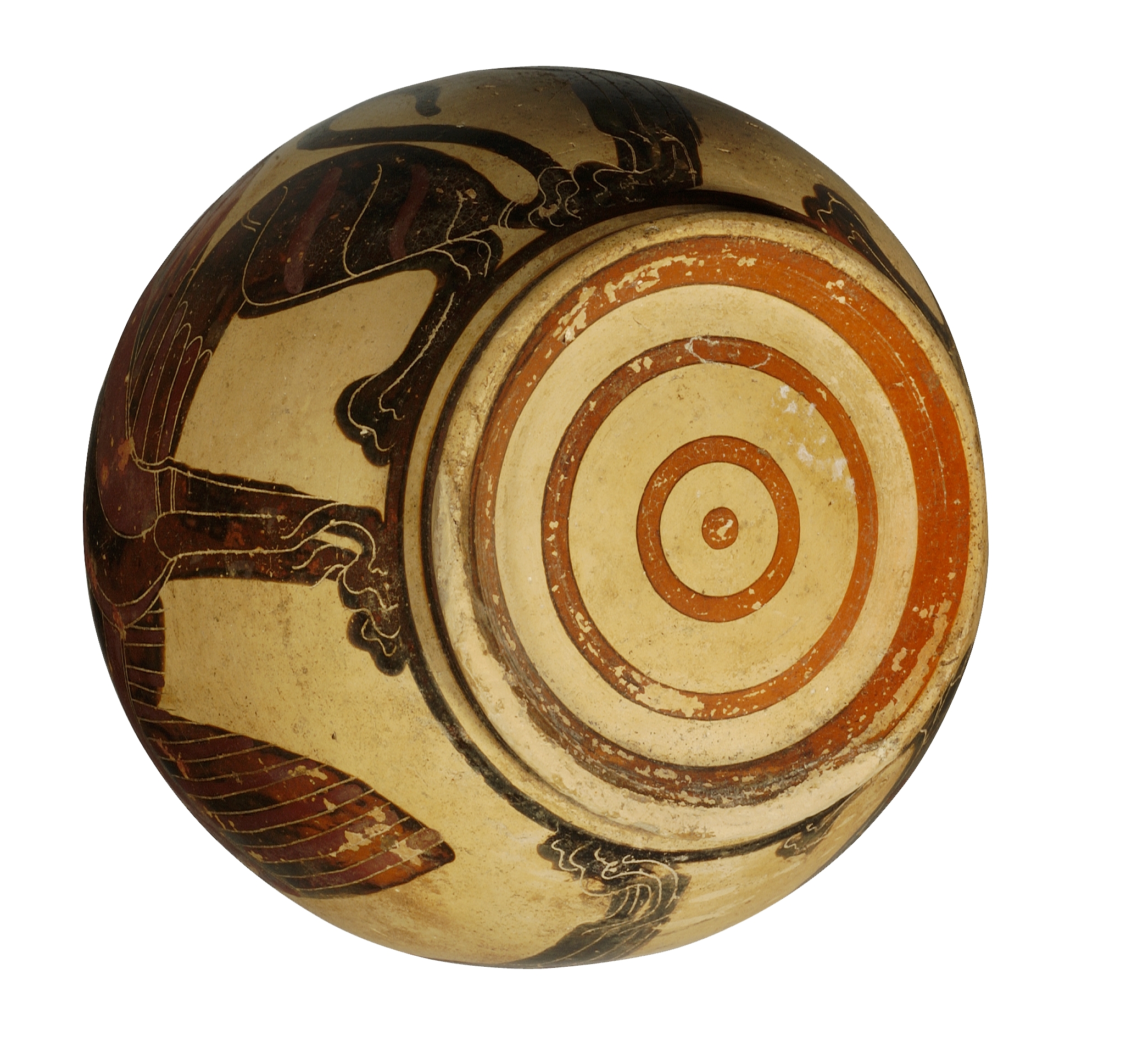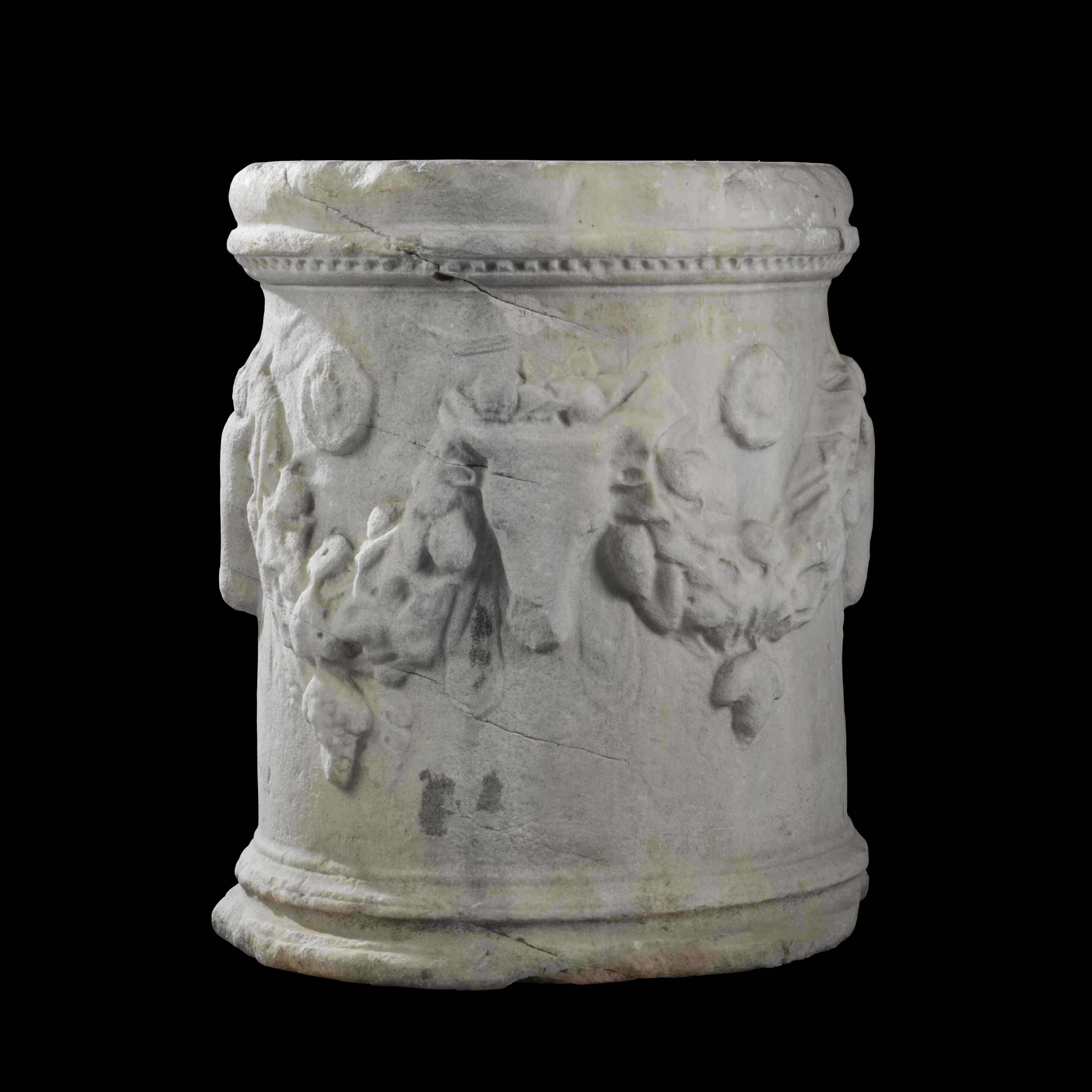The spherical body with a sphinx facing left, her wings spread, flanked by two panthers; thin bands above and below, radiating tongues on the shoulders and on the rim with dots on overhang, three circular lines underneath the base. Extremely fine work with detailed incision lines and addition of red pigment for details
Note
The aryballos helped maintain the hygiene of an athlete, before and after training or competing. In Ancient Greece, the Olympic games were held in summer at the hottest time of the year, and this small flask contained olive oil with which the athlete would have coated his body before exercising in order to prevent dehydration, as well as dirt entering the pores of the skin. In Antiquity, the athletes trained and competed naked in the blazing sun and so the olive oil massage would have helped to relax the muscles, as well as maintain hygiene.
Armand Trampitsch (1890-1970)
Armand Trampitsch was the son of the entrepreneur Antoine Trampitsch, an Austrian-born brewer who trained in Pilsen and founded the Grande Brasserie de Champigneulles in 1897. A brewer and engineer like his father, Armand began the war with the 12th Dragoon Regiment and was one of the very first students at the École de Tours to obtain his pilot's license. During the First World War, the brewery supplied the Marne and Verdun fronts and, still during the war, production equipment was ordered from Switzerland and delivered in 1918. As a result, the brewery was able to continue trading and supplying beer from the end of the war, while the competitors were still reorganising.
Armand Trampitsch joined the family business in 1911, which had become one of the largest in Europe and the flagship of French brewing. However, it was not as a company director that Armand Trampitsch made his name, but as an art collector. According to some sources, he sold his share of the company little later and moved to Paris, where he became a passionate art collector and built up a remarkable and important art collection. Armand Trampitsch himself remained an identity-conscious (Carinthian) Slovene to the end and wrote down the (Carinthian) places of his youth in Slovenian in his unfinished biography.
